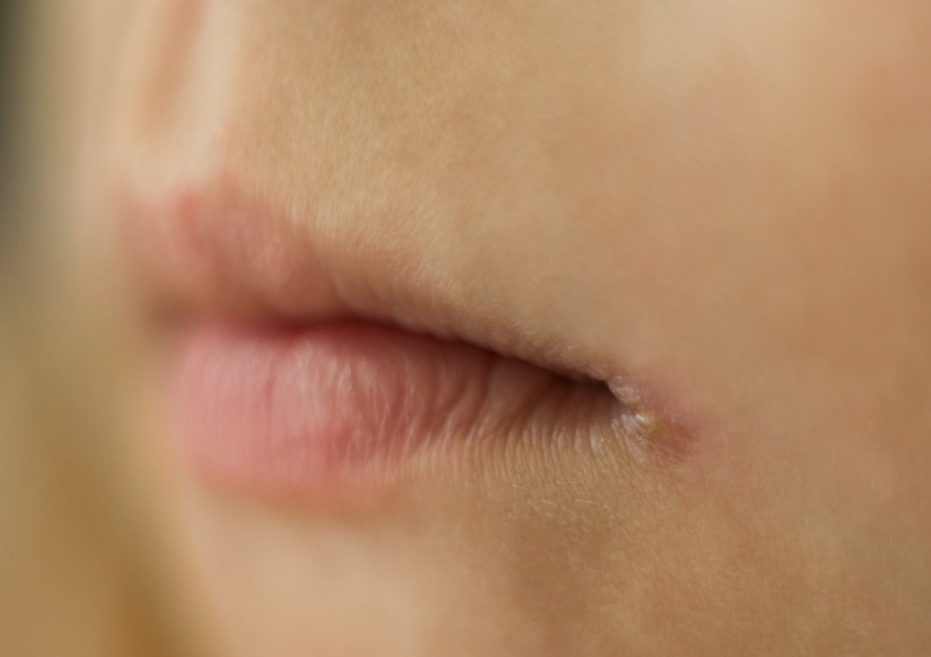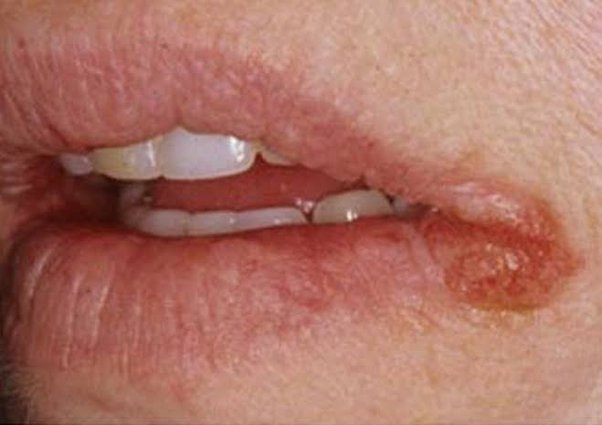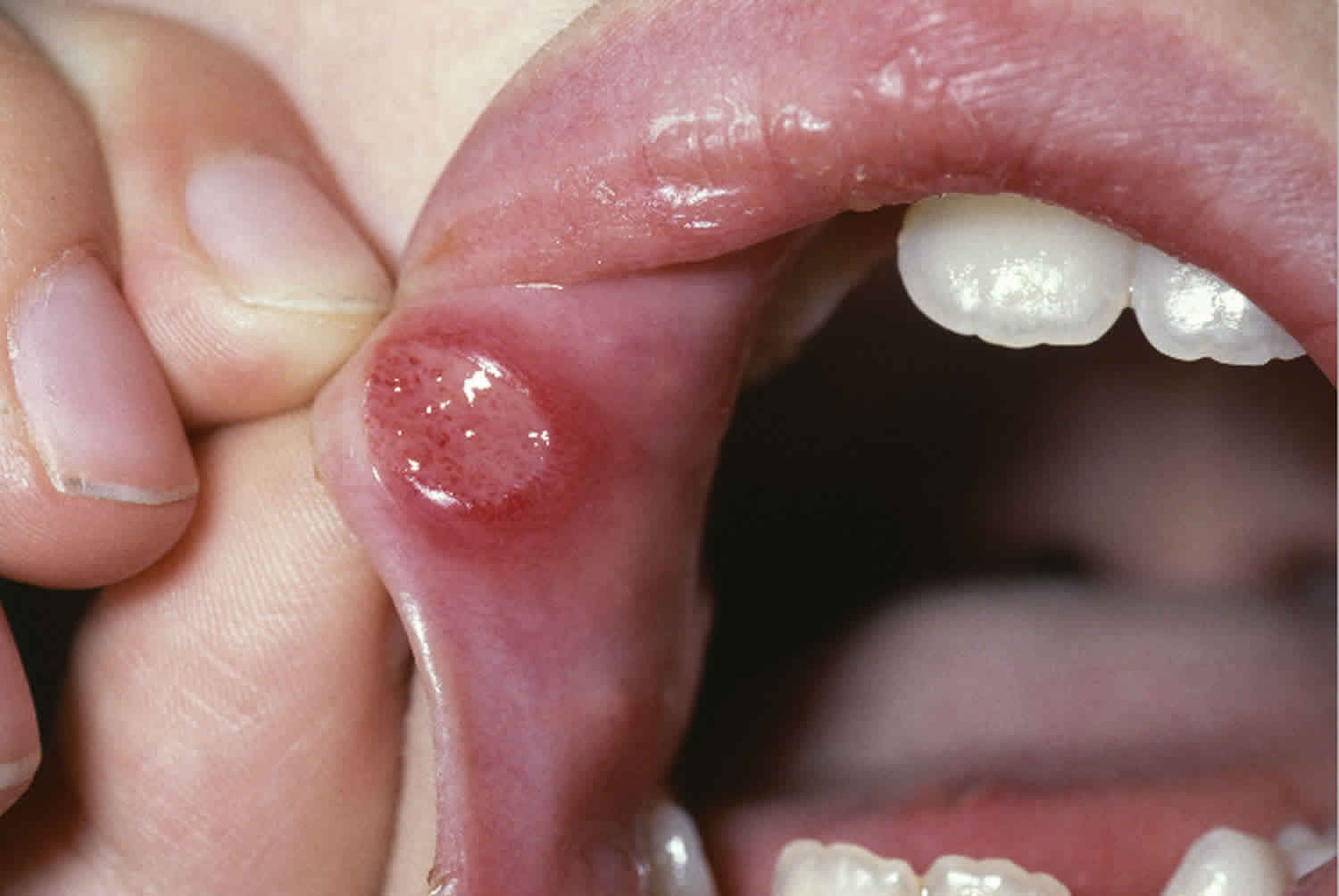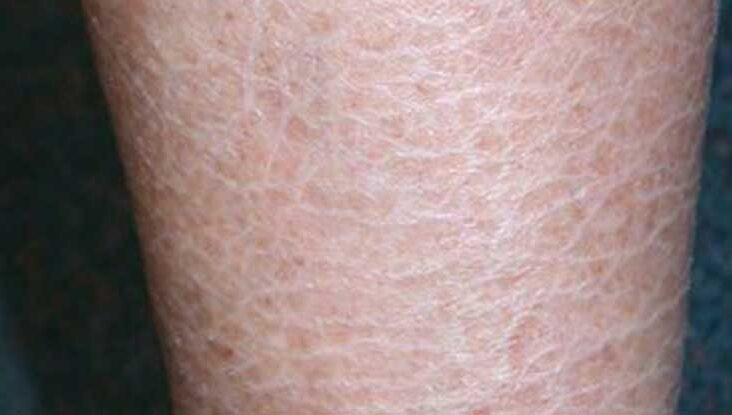Definition
Angular cheilitis is an inflammatory condition that affects the skin at the corners of the lips. It can occur in both corners or just one, causing pain and a change in color to a darker shade. While angular cheilitis is often mistakenly called cold sores caused by the herpes virus, these are distinct conditions. Angular cheilitis is not caused by a virus and is not contagious. Treatment typically involves medication and dietary adjustments.
Causes
Angular cheilitis results from a dried-out corner of the lips. The dryness makes it easier for the skin to break. When the skin breaks, bacteria on the surface can infiltrate and cause inflammation. Inflammation occurs when the body tries to eliminate bacteria, which can cause pain and discomfort.
Frequent licking or wetting of the lips with saliva can damage the skin layer. Continuous exposure to saliva can disrupt the integrity of the skin layer due to the enzymes present in saliva. A compromised skin layer provides an ideal environment for bacteria to thrive, leading to inflammation.
The most common fungus that causes angular cheilitis is Candida species, which also causes diaper rash in infants. Staphylococcus species most commonly cause angular cheilitis, which normally lives on the skin's surface.
Risk factor
The following factors can cause dry lips and increase the risk of developing angular cheilitis.
- Frequent licking and wetting of the lips with saliva
- Old age or very young age. The elderly population often uses dentures which can cause the corners of the lips to become drier. Infants may develop angular cheilitis due to pacifier use, saliva discharge, and thumb sucking
- Having a weakened immune system (such as having HIV/AIDS)
- Have sensitive skin and a history of atopic dermatitis
- Frequent drooling during sleep
- Have a fungal infection in the mouth (oral thrush)
- Have uneven teeth
- Using a mask
- Being malnourished, such as iron deficiency, having Celiac disease
- Have other diseases, such as inflammatory bowel disease (IBD) and diabetes
- Using retinoids, such as Isotretinoin, too close to the corners of the lips
Symptoms
The symptoms of angular cheilitis may include:
- The corners of the lips that look bloody
- Visible festering sores on the corners of the lips
- Broken skin around the corners of the lips
- Yellowish crusts are seen on the corners of the lips
- Discoloration of the corners of the lips to become darker or redder
- Swelling of the corners of the lips
- Itching, dryness, or heat in the corners of the lips
Diagnosis
The doctor will diagnose angular cheilitis based on symptoms, chief complaints, and physical examination. The doctor will ask questions about past dental procedures, dentures, and other symptoms related to other diseases, such as diarrhea, abdominal pain, and dry eyes. The doctor will also ask questions related to previous medical conditions, such as diabetes, HIV status, and use of certain medications, such as steroids and proton pump inhibitors (PPIs).
Following questions, the doctor will examine the corners of the lips and the inside of the mouth.
If needed, the doctor will check hemoglobin (Hb), red blood cell size, iron profile to see the iron level in the body, and fasting blood sugar.
Apart from being caused by angular cheilitis, inflammation of the corners of the lips can also be caused by other diseases, such as:
- Actinic keratosis, a skin change that is a precancerous lesion
- Herpes simplex virus-1 (HSV-1) infection, also known as cold sores
- Leukoplakia, a discoloration of the tongue that is a precancerous lesion
- Oral cancer
- Syphilis, which is a sexually transmitted disease (STD) that can cause ulcers in the mouth or genitals
Consult with your doctor to obtain an accurate diagnosis.
Management
Treatment will depend on the cause, whether it is a bacterial or fungal infection; or non-infectious (caused by saliva). In angular cheilitis caused by saliva, the doctor will administer a moisturizer to prevent evaporation of fluid on the lips and keep it moist.
If the doctor suspects that the cause of your angular cheilitis is a bacterial or fungal infection, he or she will prescribe antibiotics or antifungals accordingly. The doctor will also consider referring to a dentist if there is a tooth position that could potentially cause recurrent angular cheilitis. These medications will be given for 1-2 weeks. If oral thrush is present, the doctor will also give antifungal medication to control the infection.
If there is a suspicion that the angular cheilitis is due to nutritional deficiencies, the doctor will recommend dietary changes to improve the body's iron, folate, and vitamin levels.
Self-care
During the treatment period, in addition to taking the medications prescribed by the doctor, you can reduce pain and swelling by:
- Compressing the inflamed corner of the lip with cold water or ice covered with a cloth
- Avoid substances that can irritate the skin, such as toothpaste that is too hard, mouthwash, and spicy foods
- Avoid sunlight or cold temperatures and strong winds
- Use a lip moisturizer or ointment to keep the corners of your lips moist
Complications
Angular cheilitis usually does not cause serious complications. In most cases, it resolves within two weeks of taking medication. In severe cases of angular cheilitis, skin discoloration and scars around the lip corners may not heal (permanently).
Prevention
To prevent angular cheilitis from occurring, consider the following measures:
- If you have allergies or atopic dermatitis, avoid things that can cause your dermatitis to flare up
- Eat a healthy and balanced diet
- Drink enough water every day
- Keep your lips moisturized. Avoid licking or pulling the skin on your lips
- Stop smoking or using other tobacco products
- Do not use cosmetic products that have expired
To prevent your lips from drying out, you can do the following:
- Chewing sugar-free gum
- Taking lozenges
- Using an air humidifier at home, especially if you use air conditioning (AC)
- Consume enough water to keep your body hydrated
When to see a doctor?
If you experience irritation around the corners of your lips and the symptoms are particularly bothersome, you may want to see your doctor. Inflammatory conditions at the corners of the lips can also be caused by other things besides angular cheilitis, so you need to consult a doctor to diagnose.
If angular cheilitis does not go away within 2 weeks or gets worse (widespread, more painful, and interferes with eating), see a doctor immediately.
Looking for more information about other diseases? Click here!
- dr Anita Larasati Priyono
Cleveland clinic. (2021). Angular cheilitis. Available from: https://my.clevelandclinic.org/health/diseases/21470-angular-cheilitis
Ellis RR. (2020). Angular cheilitis. WebMD. Available from: https://www.webmd.com/oral-health/angular-cheilitis
Federico JR, Basehore BM, Zito PM. Angular Cheilitis. [Updated 2021 Dec 21]. In: StatPearls [Internet]. Treasure Island (FL): StatPearls Publishing; 2022 Jan-. Available from: https://www.ncbi.nlm.nih.gov/books/NBK536929/
Zimlich R. (2022). Angular Cheilitis. Healthline. Available from: https://www.healthline.com/health/angular-cheilitis











